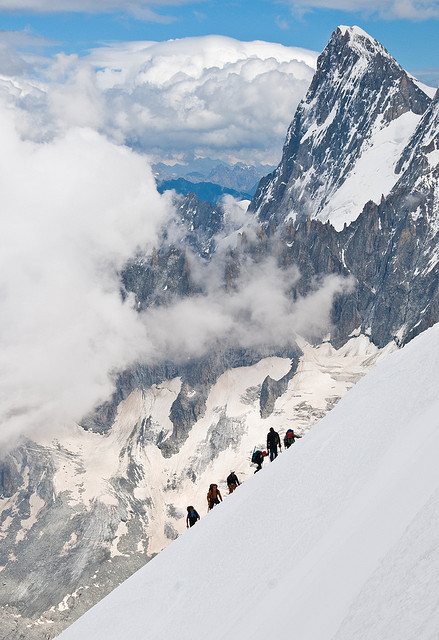Mountain Sickness

take this type of sickness into consideration when we’re planning our outdoor adventures. All we’re thinking is, yay, peace and quiet, fresh air and mountains! And then the headache, nausea, and fatigue kicks in. At this point, must of us would think we’re experiencing dehydration or it was something we ate. Nope, it’s probably altitude sickness.
When we think of the phrase “altitude sickness”, most people would think you would have to climb something like Everest before that would occur. This is simply not true. People’s susceptibilities vary greatly. Some people are only slightly affected, while others feel like they’re dying….and could in fact die.
So what exactly is altitude sickness?
Altitude sickness is a condition that results from your body not being able to get enough oxygen from the air at high altitudes. Air is “thinner” at high altitudes. When you go too high too fast, your body may not be able to get the oxygen it needs. There are three forms of altitude sickness, acute mountain sickness (AMS), high-altitude cerebral edema (HACE) and high-altitude pulmonary edema (HAPE).
Acute Mountain Sickness (AMS)
This form is commonly referred to as “mild” altitude sickness and is supposedly comparable to dehydration or a hangover.
Common symptoms are:
• headach• nausea• fatigue or weakness• dizziness or lightheadedness
as it progresses you may experience:
• insomnia• swelling of the hands, feet or face• pins and needles sensation• coughing• shortness of breath• nose bleeds
High-Altitude Cerebral Edema (HACE)
This type of altitude illness is potentially fatal. The lack of oxygen causes fluid to leak through tiny blood vessels (capillaries) and into the brain. The brain will then begin to swell and stop functioning in the normal way.
Common symptoms are:
• the symptoms of AMS (mild altitude sickness)• impaired mental function• mood changes• walking off balance as if intoxicated• if left untreated, coma and death
High-Altitude Pulmonary Edema (HAPE)
HAPE is an accumulation of fluid in the air sacs of the lungs, due to leaky capillaries. It inhibits the exchange of oxygen in the lungs and be fatal within hours.
Common symptoms are:
• most will already have symptoms of AMS (mild altitude sickness)• shortness of breath that becomes progressively worse• cough• possibly increased body temperature• “tightness” in the chest• rapid heart rate
So how can you avoid altitude sickness?
Altitude acclimatization is the key to avoiding altitude sickness. Slow ascent to altitude is the best way to acclimate well. ANYONE can develop altitude illness if they go too high, too quickly.
Some other things to consider:
• ascend gradually
• stay hydrated
• consider using acetazolamide to speed acclimatization, if abrupt ascent is unavoidable
• avoid alcohol and/or anything from the benzodiazepine family for the first 48 hours
• participate in only mild exercise for the first 48 hours
• having some high altitude exposure within a month of your trip may aid in acclimation
• do not ascend further if you have ANY symptoms that could be attributed to altitude sickness
• if you feel unwell, assume it is altitude sickness until proven otherwise
• know the symptoms of AMS and be willing to descend if the symptoms become worse while resting at the same altitude
• if you have experienced any altitude sickness before, you are likely to experience it again
• if you’ve been diagnosed with a medical condition, such as heart failure, angina, sickle cell disease, or any form of pulmonary insufficiency, you NEED to consult a physician before you travel
So take care of yourself and your companions. Altitude sickness is preventable so stay alert, aware, go slow and you’re sure to have an enjoyable sickness free time.
reference: http://wwwnc.cdc.gov/travel/yellowbook/2014/chapt…
Photo courtesy Anna & Michal with permission














